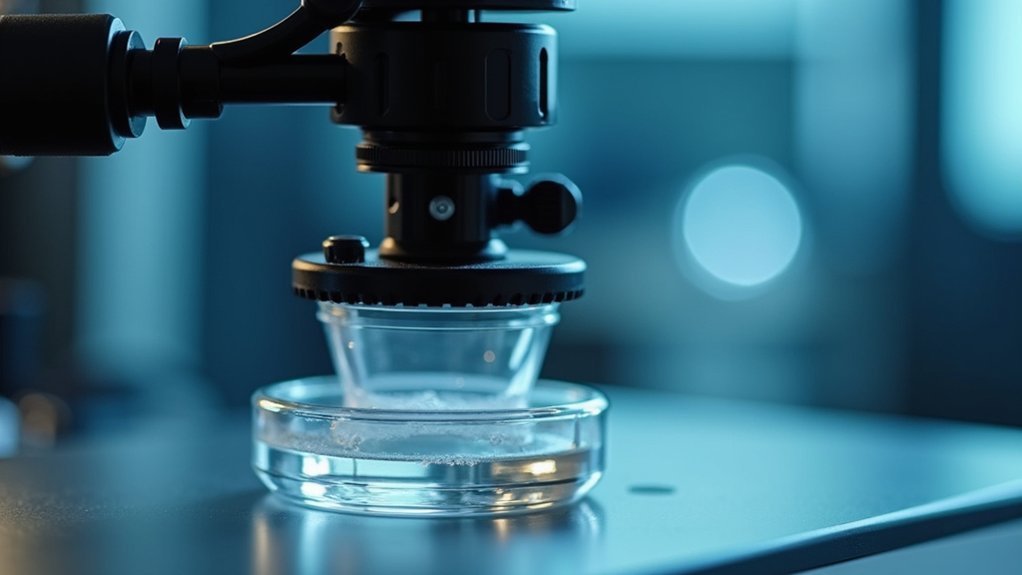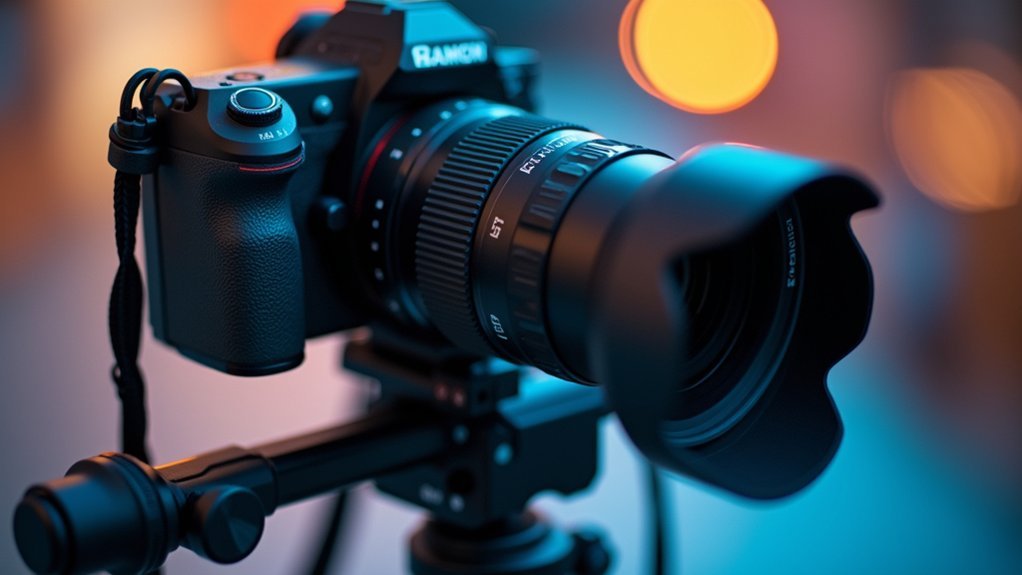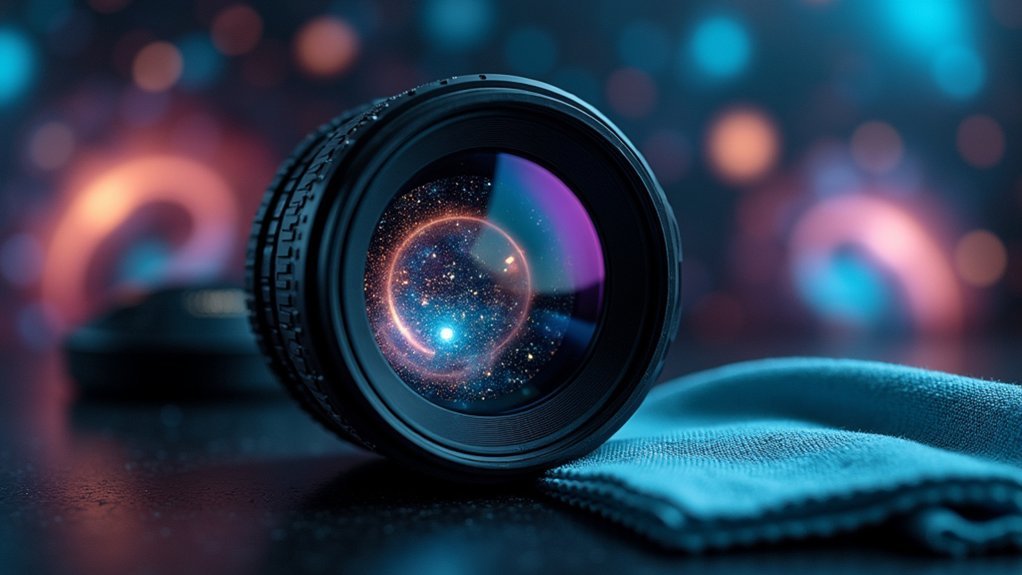To fix fuzzy scientific camera photos, first eliminate sample vibration by mounting your equipment on a stable surface or quality tripod with even weight distribution. Next, optimize camera settings with faster shutter speeds and proper ISO for balanced exposure. Finally, implement advanced stabilization techniques like remote shutter release or image stabilization features designed for high magnification work. These fundamental adjustments will transform your blurry images into crisp, detailed scientific documentation.
Eliminating Sample Vibration With Proper Mounting Techniques

When capturing precise scientific images, even the slightest vibration can transform a potentially clear photo into a frustrating blur. To minimize camera shake, always mount your equipment on a stable surface or quality tripod, ensuring the weight is evenly distributed across the mount.
In scientific imaging, vibration equals failure. Mount properly, distribute weight evenly, and preserve vital details.
Follow the focal length rule by setting your shutter speed equal to or faster than your lens length—use 1/200s or faster with a 200mm lens. For enhanced optical clarity, invest in vibration isolation mounts or dampening materials that absorb micro-vibrations.
Regularly check and tighten all mounting components to maintain a secure setup. Your mounting techniques directly impact image sharpness. Inspect your equipment regularly for wear that could compromise stability.
With proper vibration control, you’ll consistently achieve the detailed, crisp images your scientific work demands.
Optimizing Microscope Camera Settings for Clear Specimen Imaging
Beyond stable mounting, the quality of microscopic images hinges on proper camera configuration. To achieve peak sharpness, adjust your camera’s shutter speed and ISO settings to balance exposure without introducing blur. Faster shutter speeds prevent motion artifacts while maintaining clarity in your specimens.
Ensure adequate illumination by using brightfield settings or LED lighting systems, which effectively combat low light conditions that commonly cause fuzziness. Select high NA lens objectives that capture more light and deliver superior resolution for microscopic details.
Don’t overlook image stabilization features on your camera to counteract subtle vibrations during imaging.
Finally, maintain a clean lens and sensor by regularly removing dust and smudges that can degrade image quality. These adjustments will greatly improve the precision of your microscopic photography.
Advanced Stabilization Methods for High-Magnification Photography

Although standard camera stabilization helps with everyday photography, high-magnification work demands more sophisticated approaches to combat image blur.
Start with a stable tripod and robust head as your foundation for minimizing vibrations that would otherwise ruin your shots.
Enhance vibration reduction by adding dampening mounts or sandbags to your setup.
You’ll eliminate camera shake by using a remote shutter release or self-timer instead of pressing the shutter button directly.
If your equipment offers it, activate image stabilization features designed specifically for high magnification work—they’ll allow slower shutter speeds while maintaining sharp focus.
For the most extreme close-up work, invest in a focusing rail for precise adjustments without disturbing the camera position.
These tools let you fine-tune your focus while keeping everything perfectly steady.
Frequently Asked Questions
How to Fix Blurry Pictures on Camera?
You can fix blurry pictures by using a tripod, ensuring proper focus, increasing shutter speed for moving subjects, cleaning your lens regularly, and practicing manual focus in challenging lighting conditions.
How Can I Make a Fuzzy Picture Clear?
You can make a fuzzy picture clear by using photo editing software with sharpening tools, trying AI-powered tools like Topaz Sharpen AI, or adjusting contrast and brightness to enhance details that aren’t immediately visible.
Can AI Fix Blurry Photos?
Yes, AI can fix blurry photos. You’ll get best results with slightly blurry images, as AI tools analyze and reconstruct lost details. Don’t expect miracles with severely out-of-focus photos though.
How Do I Unblur a Very Blurry Image?
You can unblur a very blurry image using specialized software like Topaz Sharpen AI or Photoshop’s Unsharp Mask tool. For severe blur, try AI-powered online services that specifically target image restoration.
In Summary
You’ve got the tools you need to capture crystal-clear scientific images. Remember to secure specimens properly, adjust your camera settings for ideal resolution, and implement advanced stabilization techniques when working at high magnifications. With these three approaches, you’ll eliminate frustrating blur and capture the precise details your research demands. Don’t settle for fuzzy photos when clarity is just a few adjustments away.





Leave a Reply